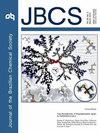甜瓜花蜜化学成分的差异解释了授粉子Apis mellifera对花的性别偏好
IF 1.3
4区 化学
Q3 CHEMISTRY, MULTIDISCIPLINARY
引用次数: 1
摘要
甜瓜是一种依赖传粉媒介的作物,主要依靠蜜蜂来结实。然而,人工选择的品种对访花者的吸引力各不相同,某些花的性别和甜瓜类型可能比其他花的性别和甜瓜类型更少,从而损害授粉。研究了5种商品甜瓜(哈密瓜、夏兰甜瓜、加利亚甜瓜、Piel de Sapo甜瓜和黄甜瓜)270个个体的雌雄花和雌雄同体花的花蜜组成及其在蜜蜂采花过程中的作用。我们发现甜瓜花蜜主要由糖和氨基酸组成,如酪氨酸、苯丙氨酸、色氨酸和类黄酮山奈酚3- o -新橙皮苷、木犀草素己糖苷和山奈酚鼠李糖苷。但这些化合物的含量因花的性别而异。我们还建立了一个精确的回归模型来预测蜜蜂对甜瓜花的访问次数。结果表明,花蜜成分对蜜蜂对不同类型甜瓜花的识别作用不大,但对蜜蜂对花性别的选择至关重要。花蜜中苯丙氨酸(49.40%)和色氨酸(12.05%)的含量与蜜蜂对雌雄同体花的偏好有关。更多的访问雌雄同体花有助于形成和发展良好的果实,提高生产力。本文章由计算机程序翻译,如有差异,请以英文原文为准。
Differences in the Chemical Composition of Melon (Cucumis melo L.) Nectar Explain Flower Gender Preference by Its Pollinator, Apis mellifera
Melon is a pollinator-dependent crop that relies mainly on bees to set fruits. However, manselected varieties vary in their attractiveness to flower visitors, and some flower genders and melon types may be less visited than others, harming pollination. We investigated the nectar composition of male, female and hermaphrodite flowers of 270 individuals of five commercial melons Cucumis melo (Cantaloupe, Charentais, Galia, Piel de Sapo, and Yellow), and its role in flower visit by Apis mellifera foragers. We found that melon nectar is composed mainly of sugars and amino acids such as tyrosine, phenylalanine, tryptophan, and flavonoids kaempferol3-O-neohesperidoside, luteolin hexoside, and kaempferol rhamnoside. But the amount of these chemical compounds varies among the flower genders. We also developed an accurate regression model to predict the number of bee visits to melon flowers based on the nectar composition. Our results indicate that nectar composition plays little role in bee discrimination among flowers of different melon types but is essential to the honeybee choice between flower gender. The amounts of phenylalanine (49.40%) and tryptophan (12.05%) in the nectar are related to bee preference for hermaphrodite flowers. More visits to hermaphrodite flowers contribute to setting and developing well-formed fruits, increasing productivity.
求助全文
通过发布文献求助,成功后即可免费获取论文全文。
去求助
来源期刊
CiteScore
2.90
自引率
7.10%
发文量
99
审稿时长
3.4 months
期刊介绍:
The Journal of the Brazilian Chemical Society embraces all aspects of chemistry except education, philosophy and history of chemistry. It is a medium for reporting selected original and significant contributions to new chemical knowledge.

 求助内容:
求助内容: 应助结果提醒方式:
应助结果提醒方式:


